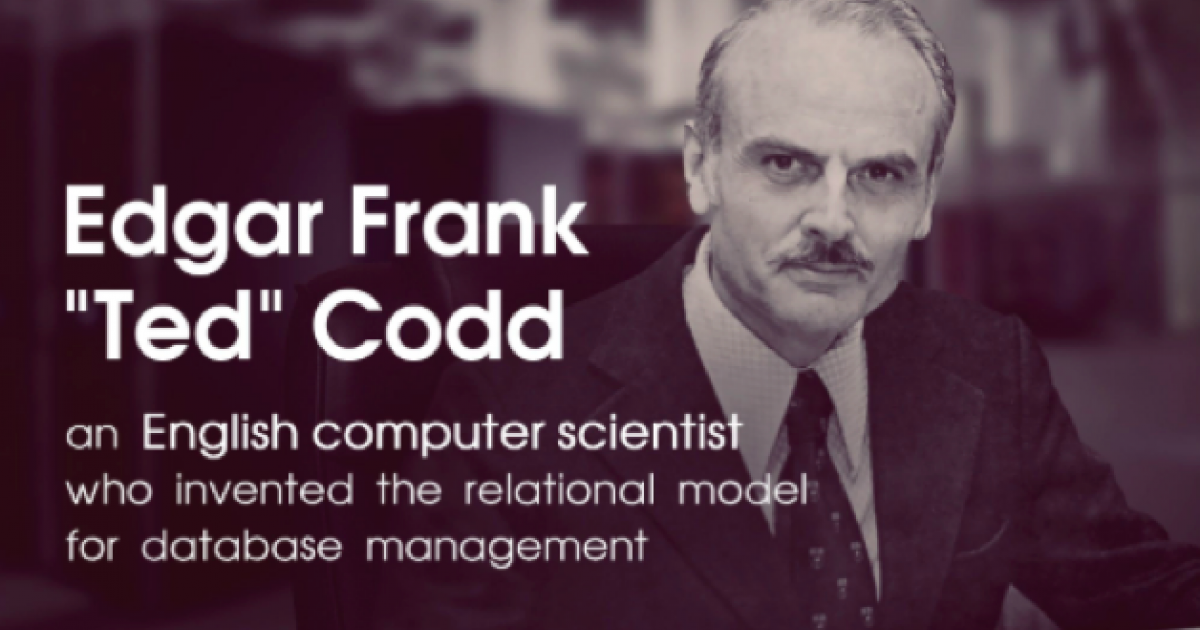Codd’s 13 Rules, a Dad’s Love, and the Tech That Runs Your World: The Untold Story of RDBMS
 Himesh Parashar
Himesh Parashar
Prologue: Why RDBMS is the OG of Data
Imagine a world where organizing data meant wrestling with punch cards or navigating labyrinthine file systems. Enter Relational Database Management Systems (RDBMS)—the unsung heroes that turned chaos into order. But behind this revolution lies a tale of zero-based indexing, rebellious programmers, and even a father who named databases after his kids. Let’s dive into the weird and wonderful history of RDBMS!
Chapter 1: Edgar Codd’s “12 Rules” (Spoiler: There Are 13)
In 1970, IBM researcher Edgar F. Codd dropped a bombshell: the relational model. To ensure databases stayed true to his vision, he devised Codd’s 12 Rules—except there’s a twist. He used zero-based indexing (Rule 0 to 12), a programmer’s inside joke that’s as iconic as starting array counts at zero.
The Rules That Changed Everything
Rule 0: The foundation: A true RDBMS must manage data entirely through relational capabilities. No shortcuts allowed.
Rule 3: Null values must exist! Not zeros or empty strings—just systematic missingness.
Rule 12: Low-level languages can’t bypass integrity rules. Even code rebels need boundaries.
Codd’s rules weren’t just guidelines—they were a manifesto. Yet, even today, no system fully complies with all 13, proving perfection is a myth.

Chapter 2: The MySQL Dad and His Three Daughters
Meet Michael “Monty” Widenius, the Finnish programmer who turned parenting into a database legacy. When his daughters My, Max, and Maria were born, he immortalized them in code:
MySQL (1995): The OG open-source RDBMS, named after My.
MaxDB: A high-performance SAP variant, inspired by Max.
MariaDB (2009): A MySQL fork born from Monty’s fear of Oracle’s closed-source takeover, named after his youngest.
MariaDB became a symbol of open-source rebellion, adopted by Wikipedia and Google, proving that even databases have daddy issues.

Chapter 3: Stonebraker’s Postgres Playground
Meanwhile, at UC Berkeley, Michael Stonebraker was busy building the future. His Ingres project (1973) pioneered relational databases, but he didn’t stop there. Enter Postgres (1986), which added support for complex data types and became the blueprint for PostgreSQL—the “open-source Swiss Army knife” of databases.
Why Postgres Matters
Object-Relational Model: Allowed custom data types (like GPS coordinates or JSON before it was cool).
ACID Compliance: Made transactions reliable, even when your coffee spills mid-query.
Stonebraker’s work laid the groundwork for modern giants like Redshift and Greenplum, proving that academia can indeed disrupt Silicon Valley.
Chapter 4: The SQL Revolution (and Why We Still Love It)
SQL—Structured Query Language—started as SEQUEL (Structured English Query Language) in IBM’s labs. Its declarative syntax (“what you want” vs. “how to get it”) made it a hit. By the 1980s, SQL became the lingua franca of databases, powering everything from Oracle to your aunt’s bakery inventory system.
Fun Fact:
SQL’s dominance is why we still argue about semicolons.
Epilogue: RDBMS vs. NoSQL—A Friendly Feud
Codd’s relational model ruled for decades, but the 2000s brought NoSQL (MongoDB, Cassandra) for scaling the internet’s chaos. Yet, RDBMS adapts: PostgreSQL now handles JSON, and MySQL dances with NoSQL features. The lesson? Old dogs can learn new tricks.
Why Should You Care?
RDBMS isn’t just about tables and joins—it’s a saga of human ingenuity. From Codd’s zero-indexed manifesto to Stonebraker’s Postgres playground and Monty’s daughter-driven code, these systems remind us that data is storytelling. And every query? A plot twist waiting to happen.
Next time you write SELECT * FROM life, remember: you’re part of the story.
Sources & Further Reading:
Dive into Codd’s 12 (13!) rules here.
Meet MariaDB’s creator here.
Stonebraker’s Turing Award journey here.
Got a database tale to share? Let’s normalize it in the comments! 🚀
Subscribe to my newsletter
Read articles from Himesh Parashar directly inside your inbox. Subscribe to the newsletter, and don't miss out.
Written by

